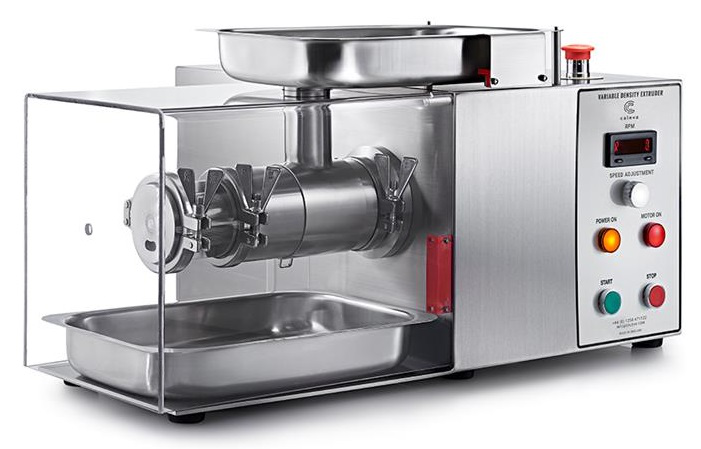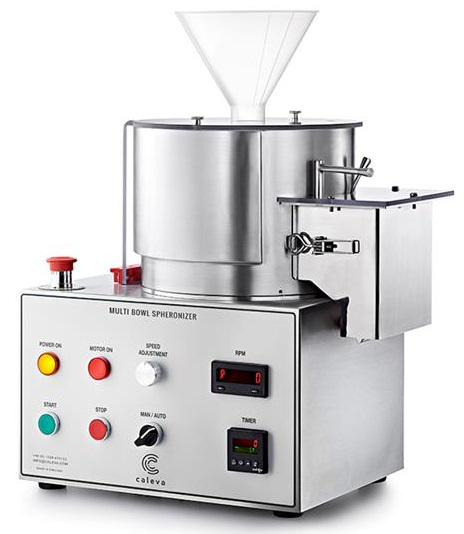PCATALOG
An Artificial Neural Network Approach to Predict theEffects of Formulation and Process Variables onPrednisone Release from a Multipartite System
Pubdate:2022-05-07 Click:987
Abstract: The impact of formulation and process variables on the in-vitro release of prednisone from a multiple-unit pellet system was investigated. Box-Behnken Response Surface Methodology (RSM) was used to generate multivariate experiments. The extrusion-spheronization method was used to produce pellets and dissolution studies were performed using United States Pharmacopoeia (USP) Apparatus 2 as described in USP XXIV. Analysis of dissolution test samples was performed using a reversed-phase high-performance liquid chromatography (RP-HPLC) method. Four formulation and process variables viz., microcrystalline cellulose concentration, sodium starch glycolate concentration, spheronization time and extrusion speed were investigated and drug release, aspect ratio and yield were monitored for the trained artificial neural networks (ANN). To achieve accurate prediction, data generated from experimentation were used to train a multi-layer perceptron (MLP) using back propagation (BP) and the Broyden-Fletcher-Goldfarb-Shanno (BFGS) 57 training algorithm until a satisfactory value of root mean square error (RMSE) was observed. The study revealed that the in-vitro release profile of prednisone was significantly impacted by microcrystalline cellulose concentration and sodium starch glycolate concentration. Increasing microcrystalline cellulose concentration retarded dissolution rate whereas increasing sodium starch glycolate concentration improved dissolution rate. Spheronization time and extrusion speed had minimal impact on prednisone release but had a significant impact on extrudate and pellet quality. This work demonstrated that RSM can be successfully used concurrently with ANN for dosage form manufacture to permit the exploration of experimental regions that are omitted when using RSM alone.
1.Introduction
Prednisone is effective for treating certain types of arthritis, severe allergic reactions, multiple sclerosis, lupus and pathologies that affect the lungs, skin, stomach and intestines [1]. In addition, prednisone is prescribed for serious pathologies such as cancer and as an adjunct to pneumonia therapy in patients with acquired immunodeficiency syndrome [2,3]. Regardless of all therapeutic benefits, the oral delivery of prednisone is associated with many challenges. Prednisone is a borderline Biopharmaceutics Classification System class I compound. Therefore, poor solubility and low dissolution rate in gastrointestinal fluids often result in low bioavailability [1]. The low tolerance level which depends on dose strength results in fluctuations in overall absorption [4]. Furthermore, prednisone has harsh effects on the gastrointestinal tract (GIT) [5], in addition to an extremely bitter taste which needs to be masked to achieve better palatability [6].
Prednisone powder, microcrystalline cellulose (Comprecel M102 D+), sodium starch glycolate, talc and magnesium stearate were separately weighed on a Mettler AG 135 top loading balance (Mettler Instruments, Zurich, Switzerland) according to working formulas for each batch (Table 1). The powders were transferred to a Kenwood Multi-Pro FP580 planetary mixer (Kenwood Ltd. Maraisburg, South Africa) and blended for 4 min. Tween 80, PEG 400 and a 50% 0/v aqueous dilution of Eudragit RL 30 D were added to the planetary mixer and the concentrations blended until a uniform paste had formed. Water was then added slowly with blending until a powder mass of optimal wetness had formed. To ensure uniform mixing, materials were repeatedly scraped from the walls of the mixing bowl during the granulation process. The resultant mass was then passed through a Model 20 Caleva@ extruder (Schlueter, Neustadt am Ruebenberge, Germany) fitted with co-rotating impellers and a screen of aperture pore size 1 mm (diameter). Extrusion was conducted at speeds 25, 30 or 35 rpm. Sufficient time was allowed to harvest the maximum yield of extrudate that were then transferred to aCaleva MBS 250 spheronizer (Schlueter, Neustadt am Ruebenberge, Germany) immediately following extrusion and spheronized for 1, 2 or 3 min. The spheronizer was fitted with a 250 mm diameter crosshatched friction plate of 3 x 3 mm pitch and 1.2 mm depth. Preliminary experiments revealed that high speeds resulted in a low pellet yield due to formation of fine material and therefore a low speed of 642 rpm was used throughout this study.
Conclusions
An immediate release multiple-unit pellet system for prednisone was successfully developed and manufactured using the extrusion-spheronization method. The availability of an alternative oral drug delivery system for prednisone will address some of the challenges associated with oral delivery of prednisone observed when conventional technologies are used. From the parameters investigated, only microcrystalline cellulose concentration and sodium starch glycolate concentration were found to have a significant impact on prednisone release. An inverse relationship was observed for microcrystalline cellulose concentration and sodium starch glycolate concentration. Increasing the microcrystalline cellulose concentration resulted in a retarded rate of prednisone release and vice versa, whereas increasing sodium starch glycolate concentration improved the rate of prednisone release and vice versa. All other excipients and process settings contributed to the production of an immediate release formulation that performed within pharmacopoeial specifications for such dosage forms.
The dissolution profile for the optimized formulation revealed gradual release of prednisone from the multipartite system suggesting that use in-vivo may result in lower incidences of gastrointestinal irritation due to the decreased local concentration of prednisone in the GIT following oral administration. In addition, the gradual release of prednisone addresses the challenge of dose dumping that is observed with conventional technologies. The presence of many individual units in a multipartite system results in an increased surface area leading to improved solubility and dissolution as shown by complete prednisone release within 60 min of commencing dissolution testing. Moreover, the prednisone pellets were loaded into gelatin capsules to produce the final dosage form with the benefit of masking the bitter taste of prednisone.



